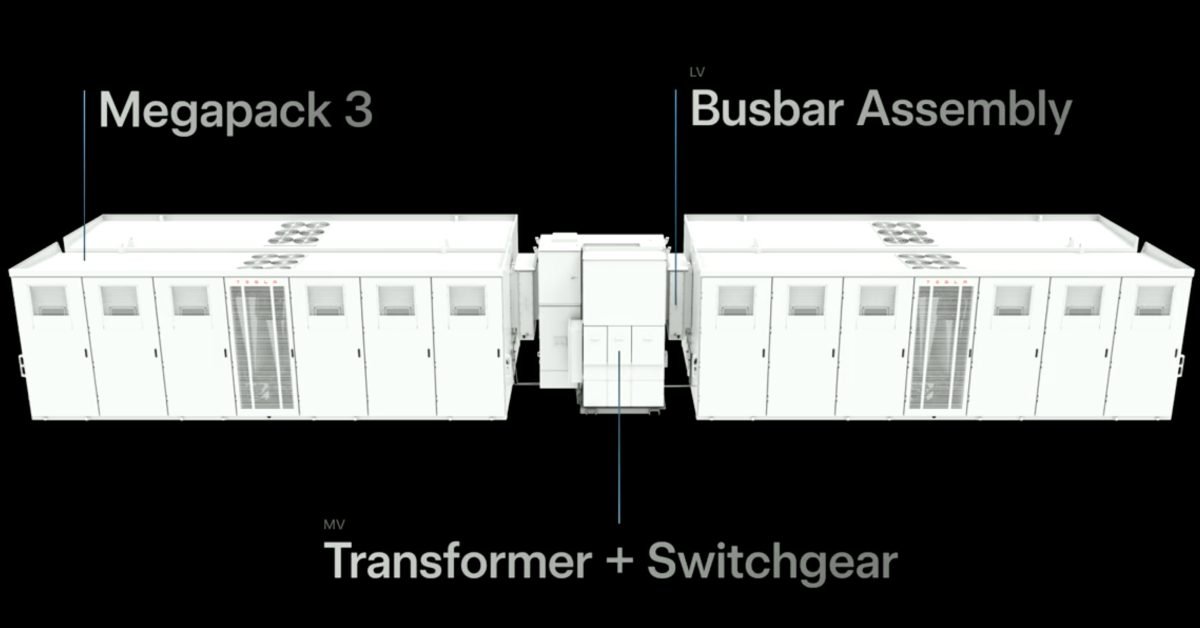Tesla confirmed its plan to manufacture its own electrical transformers, a new business for the car manufacturer, but it started on the wrong foot.
Many Top Tesla Engineers left over the past year to build their own transformer start.
With the unveiling of Megapack 3 and Megablock this week, Tesla announced that it will produce its own transformers.
Transformers are critical of electricity transfer. They regulate voltage up or down to maintain the effect.
They have not changed much in the last hundred years despite being a growing business worth about $ 65 billion annually in the United States.
It is dominated by a small group of companies consisting of Hitachi Energy, Siemens Energy and Prolec GE, and some see it as being due to disturbance. They mainly serve electrical tools for energy transfer and scaled with them, but the market has changed drastically in the last decade with now many more independent energy producers through Solar who contribute to the web.
Energy transmission and transformation must develop with the market.
With a deep expertise in power electronics, Tesla was seen as a potential disorder in the sector, but a significant part of this expertise has now moved out of Tesla to tackle the problem.
Earlier this year, we reported about Drew Baglino, Tesla’s long-standing Senoir Vice President of Technology, launching a new start-up, Heron Power, to build new solid-state transformers. The company collects $ 38 million to finance the venture.
After LED -Power Electronics Development at Tesla for years, Baglino knew exactly who to recruit, and he managed to convince many of Tesla’s top power electronics engineers to participate in:
- Chris Tilton, who was a senior manager responsible for Power Electronics design for vehicle, charging and energy products in Tesla, is now director of mechanical engineering at Heron.
- Johnny Gannon, an 8-year-old veteran at Tesla, who recently led product for Tesla charging and energy software, left the car manufacturer to participate in Be Head of Products at Heron.
- John Melling, who worked with Power Electronics design for Powerwall 3, left Tesla in April 2025 to join Heron.
- Chengcheng Yao, led the design of power electronics at Tesla, ranging from Robotaxi to Powerwall 3 as well as the next generation’s megapack and supercharger products, has left the carmaker to become Principal Power Electronics Engineer at Heron.
- Ciaran Doyle, a veteran of more than 12 years at Tesla, who led several charging programs, left last month to join Heron.
- Hussam Alatrash spent 9 years at Tesla, where he led to the Power Electronics Controls Team for Vehicle Recharge, Energy Products and Charging. He is now at Heron.
- Yanjun Shi Developped Power Electronics Control for Cybertruck, New Model 3/Y and Robotaxi. He left Tesla earlier this year to join Heron.
- Yingzhuo Chen was a 7-year-old veteran of Tesla’s electronics design team before coming to Heron late last year.
- Abolfazl Sadeghpour, a Ph.D. In Mechanical Engineering, Tesla left after 5 years in February to join Heron.
This is just one of the talent that went directly from Tesla to Heron. Baglino was one of Tesla’s earliest engineering leaders, he also recruited a lot of former Top Tesla talent that had left the company many years ago.
Bagino told Latitude Media earlier this year:
“The interesting thing I learned from Tesla is power electronics, especially highly integrated power electronics … It’s a lot of multi-physics, and you can’t just simulate it with off-the-shelf tools that you optimize. Only a few hundred, maybe a few thousand, professionals in the world, actually know how to do super-optimized, super-coastal powerful and power.”
He now brings together one of the best teams in the world to solve the problem.
Heron’s first solution, the Heron link, is a solid-state transformer capable of regulating voltage and frequency, enabling more invert-based effect to a grid while reducing the risk of blackouts.
This is known as “lattice -forming” and it is a sector that Tesla said it would contribute to in its reveal of the new megapack 3 and megablock this week.
At this point, it is unclear who is longer involved in the development of grid -forming transformers.
Tesla said its new megapack 3 will enter production towards the end of 2026, but it is unclear whether it will also include its new transformer, which is more related to the new megablock product rather than Megapack 3.
As for Heron Power, the company aims to have its first production line and runs by 2027.
Electek Tag
I like competition and I think this will ultimately be great for the web and the adoption of renewable energy and energy storage.
However, it also highlights one of my biggest concerns with Tesla in the last 2 years: a relocation of top talent.
It is not to say that there are no talented people in Tesla anymore, but as you can see above, I track close to the combinations and goals at Tesla, and these days it is almost exclusively to go, including from long -term veteran engineers who contributed much to Tesla’s success.
If Tesla wants to remain a strong company, I think it should address this talent immigration.
FTC: We use income that earns Auto -connected links. More.
